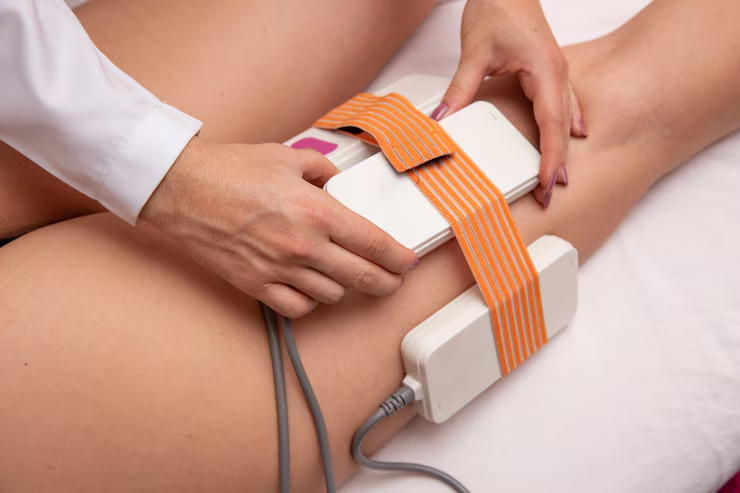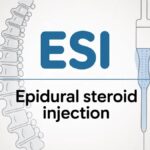Lipolaser has gained significant popularity as a non-invasive cosmetic procedure for body contouring. Unlike traditional liposuction, which involves surgical intervention, lipolaser offers a less invasive alternative with minimal downtime. In this comprehensive guide, we’ll delve into the intricacies of lipolaser treatment, its benefits, considerations, and much more.
Introduction to Lipolaser
Lipolaser utilizes laser energy to target and liquefy fat cells, which are then naturally eliminated by the body’s lymphatic system. This innovative approach allows for precise sculpting of areas with stubborn fat deposits, such as the abdomen, thighs, and love handles. The procedure is performed under local anesthesia, ensuring a comfortable experience for the patient.
Understanding the Lipolaser Procedure
Before undergoing lipolaser treatment, patients are advised to consult with a qualified healthcare provider to assess candidacy and discuss expectations. The procedure typically involves the following steps:
- Preparation: Patients may be instructed to abstain from certain medications and dietary supplements to minimize the risk of complications.
- Lipolaser Process: During the procedure, a specialized laser device is used to target specific areas of the body, delivering controlled energy to disrupt fat cells while preserving surrounding tissues.
- Treatment Experience: Patients may experience mild discomfort or a warming sensation during the procedure, but overall, the process is well-tolerated, with minimal downtime.
Who Can Benefit from Lipolaser?
Ideal candidates for lipolaser are individuals who are close to their ideal body weight but have localized areas of fat that are resistant to diet and exercise. Lipolaser can effectively contour these areas, resulting in a more sculpted physique. However, it’s essential to note that lipolaser is not a weight loss solution or a substitute for a healthy lifestyle.
Comparing Lipolaser with Traditional Liposuction
While both lipolaser and traditional liposuction aim to remove excess fat, they differ significantly in terms of invasiveness, recovery time, and results. Lipolaser offers several advantages over traditional liposuction, including:
- Minimally Invasive: Lipolaser involves minimal disruption to surrounding tissues, resulting in less bruising and a quicker recovery.
- Precision: The targeted nature of lipolaser allows for precise sculpting and contouring of specific areas.
- Safety: With lipolaser, there is a reduced risk of complications such as infection and scarring compared to traditional liposuction.
Cost and Affordability of Lipolaser
The cost of lipolaser treatment varies depending on factors such as the number of areas treated, the extent of correction desired, and the geographic location of the provider. On average, patients can expect to invest between $2,000 to $4,000 per session. While the upfront cost may seem substantial, many patients find that the benefits of lipolaser justify the expense.
Post-Treatment Care and Recovery
Following lipolaser treatment, patients are advised to take certain precautions to optimize results and minimize discomfort. This may include wearing compression garments, avoiding strenuous activities, and staying hydrated. While some initial swelling and bruising are normal, these side effects typically subside within a few weeks.
Real-Life Experiences and Testimonials
Numerous individuals have undergone lipolaser treatment with highly satisfactory outcomes. Before-and-after photos and testimonials showcase the transformative effects of this innovative procedure. Many patients report feeling more confident and comfortable in their bodies following lipolaser treatment.
Addressing Common Concerns and Misconceptions
Despite its proven efficacy, lipolaser may still be met with skepticism or misconceptions. It’s essential to address common concerns regarding safety, effectiveness, and suitability for different body types. By providing accurate information and realistic expectations, patients can make informed decisions about pursuing lipo laser treatment.
Choosing a Qualified Provider
When considering lipo laser treatment, it’s crucial to select a reputable provider with extensive experience and expertise in cosmetic procedures. Patients should thoroughly research potential providers, review before-and-after photos, and schedule consultations to discuss their goals and expectations.
Recent Advances in Lipolaser Technology
Advancements in lipo laser technology continue to enhance the efficacy and safety of the procedure. Newer devices offer improved precision, customizable treatment parameters, and enhanced patient comfort. As technology evolves, so too do the possibilities for achieving optimal body contouring results.
Combining Lipolaser with Other Cosmetic Procedures
For individuals seeking comprehensive body transformation, combining lipo laser with other cosmetic procedures can yield synergistic effects. Common combinations include skin tightening treatments, muscle sculpting procedures, and cellulite reduction therapies. By customizing treatment plans to address specific concerns, patients can achieve their desired aesthetic goals more effectively.
Maintaining Results and Lifestyle Changes
While lipo laser can effectively remove targeted fat deposits, maintaining results requires a commitment to a healthy lifestyle. This includes following a balanced diet, engaging in regular exercise, and avoiding habits that may contribute to weight gain. By adopting sustainable lifestyle changes, patients can prolong the benefits of lipo laser treatment and enjoy long-term satisfaction with their appearance.
Addressing Potential Risks and Side Effects
Like any cosmetic procedure, lipo laser carries certain risks and potential side effects. These may include temporary swelling, bruising, and discomfort at the treatment site. However, serious complications are rare when the procedure is performed by a qualified and experienced provider. Patients are encouraged to discuss any concerns with their healthcare provider before undergoing treatment.
Exploring Alternative Non-Invasive Body Contouring Methods
In addition to lipo laser, several alternative non-invasive body contouring methods are available, each with its unique benefits and limitations. These may include cryolipolysis, radiofrequency lipolysis, and high-intensity focused ultrasound (HIFU). By exploring alternative options, patients can make informed decisions based on their individual preferences and treatment goals.
Conclusion
Lipolaser offers a safe, effective, and minimally invasive solution for targeted fat reduction and body contouring. With its precise technology and minimal downtime, lipo laser has become a popular choice for individuals looking to enhance their physique and improve their confidence. By understanding the procedure, considering candidacy, and choosing a qualified provider, patients can achieve transformative results and enjoy a more sculpted silhouette.
FAQs
Is lipolaser suitable for weight loss?
Lipolaser is not intended as a weight loss solution but rather as a method for targeted fat reduction and body contouring. It is most effective for individuals who are close to their ideal weight but have stubborn areas of fat.
How many lipolaser sessions are typically required?
The number of lipo laser sessions needed varies depending on factors such as the patient’s goals, the areas being treated, and the extent of fat deposits. Many patients achieve satisfactory results after a series of treatments spaced several weeks apart.
Are the results of lipolaser permanent?
While lipo laser can effectively remove targeted fat cells, maintaining results requires a commitment to a healthy lifestyle. Without proper diet and exercise, new fat cells can accumulate over time, compromising the longevity of the results.
Is lipolaser safe for all skin types?
Lipo laser is generally safe for individuals of all skin types and ethnicities. However, it’s essential to consult with a qualified provider to assess candidacy and discuss any potential risks or concerns.
What is the recovery process like after lipolaser treatment?
The recovery process after lipol aser treatment is typically mild, with minimal downtime. Patients may experience temporary swelling, bruising, or discomfort at the treatment site, but these side effects generally resolve within a few days to weeks.







